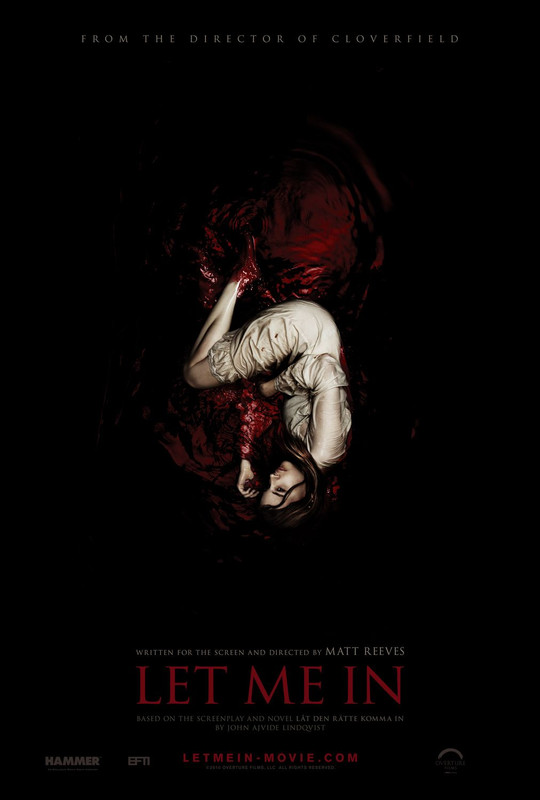Dir: Matt Reeves
It should be so easy. Let the Right One In is such a filmable book, it’s all there; a scary, nasty, edgy, different, horror film. All you have to do is shoot it. So why, twice now, has cinema managed to miss that very special mix of horror, first love and pathos that the book gets so right?
My major gripe with the original, Swedish, version of this film was that it really only told one of the three story strands that the book deals with – the one about a bullied 12 year old boy (here called Owen and played by The Road’s Kodi Smit-McPhee) who becomes friends with a vampire who appears to be a 12 year old girl (here Abby, played by Chloe Grace Moretz, destined now and forever to be remembered as Hit Girl) - Let Me In focuses on this single strand of the book to the near total exclusion of everything else, so much so that when other storylines intrude (like the amazing sequence in which a local woman named Virginia begins to turn into a vampire) they feel like they belong in another film entirely.
There are things to admire here, mainly the two central performances. Chloe Moretz is especially good as Abby. Her character may lack some of the complexities of the original’s Eli, but with what she’s got to work on, Moretz does brilliantly. She’s spoken in interviews about the loneliness she thinks is Abby’s lot as a vampire, and that’s what comes through most strongly in her performance, and her interactions with Kodi Smit-McPhee. An especially nice moment between the two comes when Owen offers Abby a sweet, which she takes, it’s clear, because she can see it means a lot to him. In that one small moment there is much said about both of those characters.
There is so little room for other characters that a couple of gifted actors are given shorter shrift than they deserve. As ever Elias Koteas is effective, but (also as ever) he just doesn’t have enough to do, and is essentially, in the end, a plot device. Richard Jenkins has perhaps three audible lines as the unnamed ‘father’ of Abby, and poor Cara Buono, as Owen’s mother, never even gets her face on screen.
Matt Reeves pulls out one really strong scene of his own; a brilliant set piece in a car, which starts out tense and ends up visceral, and remains thrilling throughout. The POV car crash in that scene is easily the most memorable original shot in the film. Otherwise though, Reeves comes off poorly. Most of his shots are near direct lifts from Tomas Alfredson’s film, and when they aren’t they tend to be less effective. Two things were especially irksome. The first is Reeves’ fondness for lens flare, perhaps learnt from his friend JJ Abrams. There is some flare in almost every other shot of this film, and it is never anything other than distracting. Perhaps more damaging is the way that Reeves chooses to stage Abby’s vampiric attacks. He’s upped the violence of them, which is fine, and in keeping with the book, the problem is that he’s done it through the medium of shockingly poor CGI. All the film’s CGI is awful, though none more so than the fire in what should have been a shocking scene. Honestly, is there nobody left in Hollywood who can do a full body burn?
We’re also treated to one of the most singularly obnoxious horror film scores of recent times. Michael Giacchino’s music isn’t so much score as it is a musical Cliff’s Notes for the film, instructing us in exactly how to interpret every last moment. It grates particularly during the horror scenes, in which it readily embraces every booming cliché of horror film music with great apparent zeal.
Overall, Let Me In is a pretty pointless exercise, despite its several undoubted strong points. Even those strong points were done better in the Swedish film (itself far more flawed than most critics would have you think). Let Me In amounts to a photocopy; very similar to its original, but of reduced quality.
★★☆☆☆


No comments:
Post a Comment